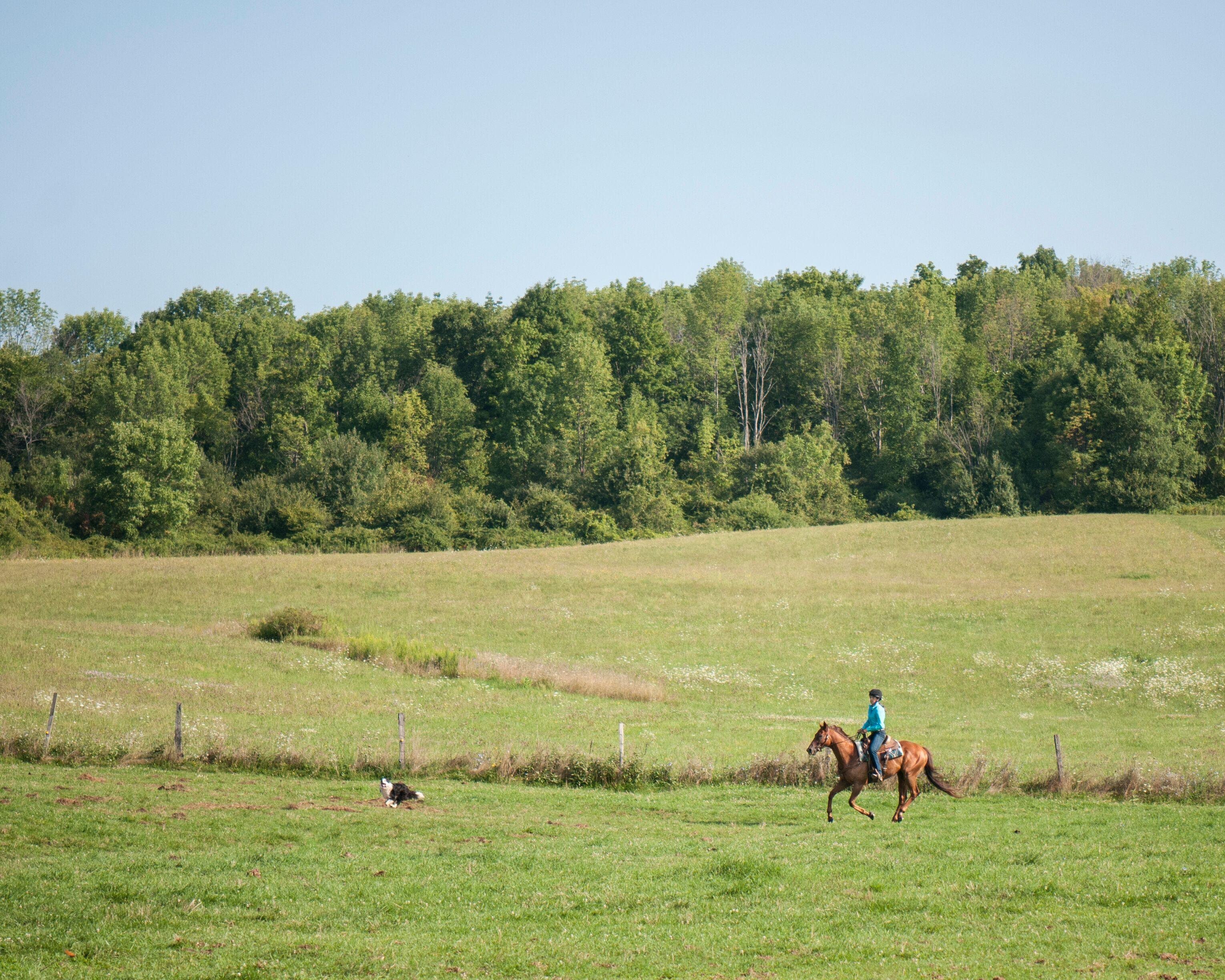
Training Tips for Trail Riding With Dogs
Have dog, will trail ride!
It’s an iconic image: the cowboy on horseback riding along a ridgetop, his faithful herding dog trotting along by his side. The good news is that this could be you too when you hit the trails this spring or summer… it just takes some patient work to get all parties involved to cooperate happily!
While I don’t count myself as a professional dog trainer, these are the steps I took to get both my dog and my horse adjusted to each other so we could all enjoy long rides together. My fellow border collie owners will feel me when I say that this is one of the best ways to keep those herding dogs happy!
Before I get into the process, an important disclaimer: I only ride with my dog on private property. Most public lands include a leash law, which only works when everyone participates. When hiking, I’m always frustrated when an unleashed dog comes bounding up to my leashed dog, who understandably gets anxious, with the hapless owner of the unleashed dog jogging along yelling, “It’s okay, he’s friendly!” If you’ve ever experience an unleashed dog leaping up to your horses on shared trail systems, you’ll understand why it’s important for everyone to cooperate with this rule.
Okay, on to the fun part — getting your horse and dog ready to ride!
1. For the safety of everyone — you, your horse, your dog and anyone else you interact with at the barn — make sure your dog is well-schooled in basic obedience and is familiar with the barn.
As an example, my dog knows how to come, sit, lay down, wait, go out/move away, and she takes direction from where I point. She also knows the less useful but endearing left and right paw, and also how to go jump and sit in a tractor tire. Additionally, she has learned to give horses a wide berth in the barn and around the property.
Much like “green on green” in terms of rider/horse experience is generally viewed as a bad idea, training your horse to get used to your dog that himself is not yet well-broke is a recipe for disaster. Make it easier on yourself and work on all of this basic training at home. Additionally, a dog with poor natural recall may not be a great candidate for trail riding.
2. Start on the ground.
When I first got Jobber going around the farm, I started our dog work in-hand, with my border collie Sage walking in front of us, next to us on both sides and behind us until Jobber was pretty comfortable in her presence (this didn’t very long).
From there, we progressed to having Sage run towards us from the front, then the sides, then up from behind while standing or walking. (Remember what I said about having a dog that can sit/lay down and wait, then come on command? This is good practice.) Initially, Jobber would get a little bit jazzed with the pitter-patter of Sage cantering up behind him, but with enough repetition, he learned pretty quickly that she wasn’t out to get him.
3. Start slowly.
The old adage “walk before you can run” is an obvious choice here — when it was pretty clear to me that Jobber was A-OK with Sage coming and going and bursting up before him and behind him out of ditches and creekbeds as dogs are inevitably wont to do, we progressed to me being in the saddle, working over all of the same things at the walk. Sage would follow along, run ahead, and run back on request, and then when left to her own devices without direction, she would orbit us like fast-moving satellite thanks to her herding dog instinct.
From there, we moved up to the trot and canter.
4. Take the time it takes.
If it seems like this is a lot of baby steps and a long process, understand that I’m chunking it way down — you might move through some or all of these steps all in one day, but this gives you plenty of room to work on something your horse or dog might find challenging. We have another horse on the farm who needs a refresher on every single ride when the dog goes anywhere behind him and makes even the slightest amount of noise. He might never be a really quiet, well-broke trail horse WITH a dog, but he’s great solo.
5. Keep an eye on your dog’s fitness!
While my border collie has seemingly boundless energy, I also make sure that I’m not overdoing it with her — some dogs will go until they literally drop in their tracks. Sage is fairly smart about finding the creek or, much to my chagrin, a cool mud puddle to lay down in when she gets particularly hot, but I still monitor her closely to make sure I’m not overworking her, especially in the hotter days of summer. Just like we monitor our horse’s fitness level, make sure your dog is fit enough for long rides at speed if that’s your goal.
The sun is shining and the trails are beckoning — with some homework and training ahead of time, you can put in some miles this season with your horse AND your dog! Go riding.









Leave a Comment